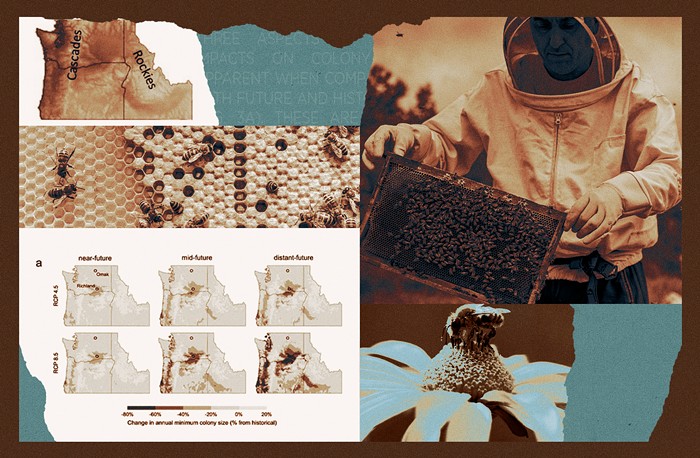
Who influences the public discussion about climate change? In the wake Trump’s disbanding of the federal advisory panel on climate change, this question sits like a stone at the bottom of my stomach. Who are we listening to? Who is driving this imperiled planetary spaceship–obviously not Trump, a man with such disdain for scientific expertise that he could not even be bothered with plebeian eclipse glasses–the greatness of his eyes obviously sufficient to view such a modest event.
This question raises my ire a good deal because our local favorite meteorologist Cliff Mass called me “not a real climate scientist” in the comments of a Seattle Times opinion piece I co-authored. That’s right, you might have a Ph.D. in the field of paleoceanography and a decade of scientific expertise, but your ladybrain is not equipped to handle “real” science. This toxic perspective is Trumpian and misogynistic and needs to go away.
Beyond being a cheap dig, what does that accusation actually mean?
Earth’s climate is this beautiful manifestation of planetary geometry, volcanism and cosmic impact events, the weathering of mountains, and the circulation of the deep ocean. No doubt, it is complex. Over the last million years, the heartbeat of Earth’s climate has been oscillations between glacial and interglacial states. These very-cold to quite-warm planetary oscillations are phenomenal expressions of Earth system variability, and they reveal the components of the system that also change through global climate events. These include, but are not limited to: ice sheets, sea ice, ocean circulation, sea water chemistry, the oxygenation of the deep sea, global nutrient cycling, volcanism, and global biodiversity distributions.
Like I said, this shit is complex. What’s more, glacial/interglacial climates that occur over thousands of years only skim the surface–much deeper time climate states are just as relevant to understanding the planet of our day.
Moreover, paleoclimate science is just a single branch of the fields that inform modern climate science. Scientists and engineers are dropping instruments into every part of this planet–from the top of the atmosphere to the deep seafloor–and these physical, chemical, and biological observations help us to track changes underway right now. And, future climate projections are methodically developed and vetted from complex computer simulations–wherein the planet (along with, for example, the atmosphere, ocean, and continental vegetation) is recreated essentially in code and equations.
It is absolutely impossible to house the comprehensive expertise of climate science in one lowly human being. The field is too damn big. True, some scientists are closer to the center of the field than others–but none of us can speak for the entirety of the science, and this is why the Intergovernmental Panel on Climate Change (IPCC) is such a phenomenal beacon of scientific consensus. They’ve done the hard work for us–indeed, the very purpose of the panel is to synthesize scientific consensus.
To be honest, the most fundamental thing that I have learned as a scientist is how very little I actually know. The depth of expertise within individual fields will take your breath away—and this is a good thing. Our working body of knowledge is phenomenal, and individual scientists are simply unique nodes in a vast, interconnected web of ideas and data.
The real key about who “gets to be a climate scientist” is this: look for the voices that acknowledge fallibility and limits of expertise. Look toward the public experts that say: “You know, I don't know the answer to that question, but I bet we could find you some that does.” That is what intellectual honesty sounds like—and we are sorely in need of such honesty and integrity within the climate conversation here in Seattle.















